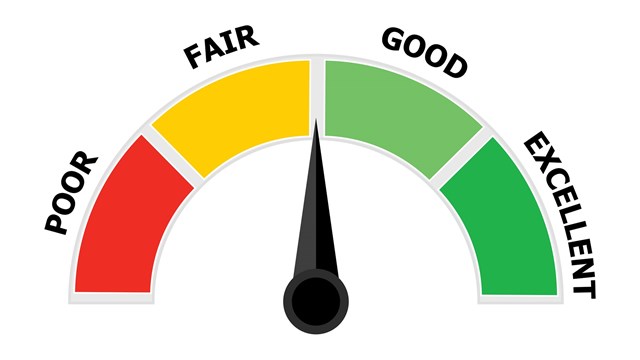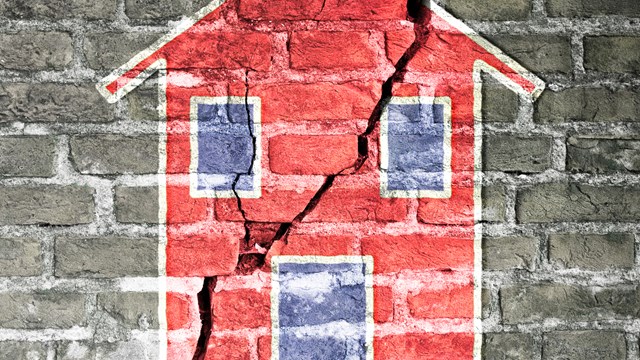
Unless it's a thoughtful gift or a party in their honor, nobody likes surprises. That's especially true when it comes to sudden, serious, or non-negotiable repairs to a co-op or condo building. A building community must have enough money saved to deal with major projects as they arise, or risk major financial and structural troubles. But economic woes of residents such as unemployment or default, or living on tight fixed incomes, means more HOAs are finding it difficult to keep their reserves adequately funded.
But ignoring this important savings fund puts both community administrators and residents on a path to inevitable problems. Reserve funds play a crucial role for an association, and neglecting them may seem okay now—even prudent—but doing so can compound a maintenance issue into an out-and-out crisis.
Reserve Studies 101
“When you’re managing a facility, whether townhomes, co-ops or condos, there’s a responsibility to the common areas that isn’t the responsibility of the individual owners,” explains Alan Mooney, P.E., president of Criterium Engineers, a nationwide consulting firm with its largest and oldest office, Criterium-Tauscher Cronacher in Manhattan. Within that, Mooney says, there are two categories: one that covers general annual maintenance costs and the other that addresses non-annual work, “the things that you wouldn’t put in a normal annual operating budget.” A reserve study identifies this second group of items. This may include costs of regular updates on major building systems like hot water heaters and elevators. It also should include enough for unpredicted repairs.
The reserve fund is the money that an association puts aside to meet the needs of that reserve study. Finding the right firm to handle your reserve study entails some homework on the part of the board. Look for someone with established professional credibility. Some licensed architects may conduct reserve studies but they are typically handled by a licensed professional engineer.
If you’re considering someone without either of these professional licenses, check to see if they're a reserve specialist or RS, the certification for which requires a number of completed courses of study, plus references. In order to earn an RS designation, “Basically, you have to demonstrate a legitimate track record,” Mooney says.
Finally, in the absence of any of these industry designations, Mooney suggests asking a prospective provider for references from reserve studies they conducted three to five years ago. “Something an association has lived with for a few years,” he says. Talk to board members where the reserve study was completed, and find out if the calculations proved accurate and useful. “It’s incumbent upon the board to really know who they’re dealing with,” Mooney advises.
The Study Itself
The cost of a reserve study depends on a number of basic factors: the size of the building, how many units and the square footage and complexity of common areas. Mooney estimates, for example, that a 100-unit building that “isn’t super old, or doesn't have a lot of issues” would likely pay $5,000 to $6,000 for a thorough reserve study. In New York City, that number may jump to $8,000 or more because of added costs, including access to the appropriate areas of the building (which may also add time to the process) as well as added research because of complex regulatory issues that can impact building systems in the city. “It really comes down to time because we’re consultants,” Mooney explains.
Unless you're in a hurry (and are willing to pay extra for a quicker turnaround) the pros advise allotting a month to get a complete reserve study. After the engineer submits the draft report, the board of directors should review the draft and make any comments. For instance, Mooney says, there may be some subjective considerations—such as a rooftop pool that could be repaired, operated on a scaled-back schedule, or simply shut down—to take into account, and then receive a final report to disseminate to homeowners.
While it’s difficult to force an association to commission a reserve study, in New York City, buildings face financial penalties for not complying with a related law—Local Law 11 of 1998. All buildings greater than six stories (basements are typically considered a story) are required to have the entire building envelope periodically inspected by a licensed registered architect or professional engineer, with a resulting report filed with the Department of Buildings. The report designates a building Safe, Safe with a Repair and Maintenance Program (SWARMP), or Unsafe. If you’re unfortunate enough to receive an Unsafe description, the building must be repaired within 30 days. New York City created a staggered inspection schedule that is based on block numbers, so it’s important to check with the Department of Buildings to make sure you’re hitting yours at the right time.
For New York City dwellers, a reserve study is on top of this Local Law 11; but a reserve study is applicable for any association in the state. It’s up to each board as to how often they are completed, but Mooney suggests every 3 to 5 years, with 5 really being the maximum and 3 or less being ideal.
“The big difference in the updates is not so much the condition of the building—although a weather event may accelerate a given condition—but to update the cost,” he says. “Especially in this economy, we’re seeing huge swings in what roofing or paving may cost; anything can change from 50 percent to 100 percent from year to year in some cases, and of course you’ve got inflation and return on investment.” It makes sense to put the reserve funds into an account that will earn you some money, and any good reserve study will show you what that return will be.
How Much?
The tricky thing for many associations is deciding how big that reserve fund will be. As you may have surmised already, since every building is different, there’s no standard, iron-clad amount. “You can’t really say you have to have ‘x’ amount,” says Neil Kaufman, CPA, a partner at Newman Newman & Kaufman LLP, an accounting firm based in Syosset. “You may have $3 million and it might not be enough.”
“Figure out how much your building needs to first meet the current obligations of building improvements and second, meet future building improvements that might arise all of a sudden,” advises Philip Miller, CPA, president of Manhattan-based accounting firm, Miller & Cusenza, P.C. Your reserve study is essential to determining the unique needs of your building, so don’t compare yourself to any other. Once the reserve study is complete and indicates immediate or future repairs, it’s useful for the board to prioritize them, particularly if the residents will find it financially difficult to cover all costs quickly.
One thing to remember is that, as much as a board or unit owners would like to spruce up the common areas, necessities come before luxuries, Kaufman stresses. “If I were living in a building and they used my reserve study to do new carpeting and furniture, and they turned around and told me we needed a special assessment for a new boiler, I’d be pretty upset,” he says.
“It’s almost a joke in some ways in the community association field that the biggest fear anyone has is something called a special assessment, where you’re blindsided by something that you have to raise the money for,” Mooney says. “It can create a very hostile environment among homeowners,” he adds.
Money Well Spent
The upfront cash outlay may scare some association boards away from commissioning a reserve study, but it’s not only a smart investment, it’s one of the job descriptions of the board. “People think with their wallets,” Kaufman says. “They understand why it should be done but don’t want to spend the money on it, but it’s the board’s fiduciary responsibility to take care of the building.”
Besides the present and future well-being of the building, there are other benefits to the reserve study. In New York City, these may include J-51 program tax benefits, offered through the Department of Housing Preservation and Development (HPD) and the Department of Finance and allowing partial property tax exemptions and abatement benefits at the corporate level of a co-op. Kaufman suggests consulting with a J-51 tax consultant if you think you may qualify for this but reminds building managers that this is not a reason for doing reserve studies, “but it could be a byproduct of doing them.”
Also, general improvements can save on regular repairs and maintenance. “For example, you do a big exterior restoration, so you’re not going to be shelling money out every year for repairing leaks,” Kaufman says. Or you replace a boiler and the building and/or its residents might save money on heating. A building may also choose to incorporate some “green” improvements, such as increased recycling efforts, that could make the building more desirable for potential home buyers.
A well-done reserve fund study also reflects positively on the management of the association, which in turn makes homebuyers feel more comfortable purchasing in that building.
Setting Up Savings
If your board has not initiated a reserve study and subsequent reserve fund yet, get your head out of the sand and start. Start simple by opening a separate account for the reserve fund. This ensures the money stays put and doesn’t wind up being used for regular maintenance. “You may say that any payment out of the reserve fund needs two signatures,” suggests Mooney, adding “The tighter you can make the process, the better.” To begin building the fund, you might charge small special assessments every year or every few years for the next 10 or 12 years, as well as incrementally increasing regular monthly assessments. Although some unit owners may prefer to manage their own money, that tends to be rare and hard to do. “Most people prefer incremental increases, rather than waiting for one large sum,” Mooney says.
If your building is hit with a large assessment without that reserve fund healthy enough yet to cover it, there are a few ways to cope. While a building may use a line of credit, Miller suggests this can put a strain on the operating budget because the building will have to pay back the interest on it. A co-op could borrow the money, if it’s available, or, if operations are making a profit, throw that into a reserve, Miller says. Another possibility for a coop is to raise funds by refinancing or enact or increase the “flip-tax” or transfer fee—usually 1 to 3 percent of sale price—that the corporation charges when someone sells a unit.
If you’re hesitating about whether to commission a reserve study or whether to fund it properly, Kaufman warns, “You might think what you don’t know won’t hurt you, but it does.” In other words, it’s what’s best for your building. “Prioritize it, fund it, implement it—use it.”
Elisa Drake is a freelance writer and a frequent contributor to The Cooperator.






Leave a Comment